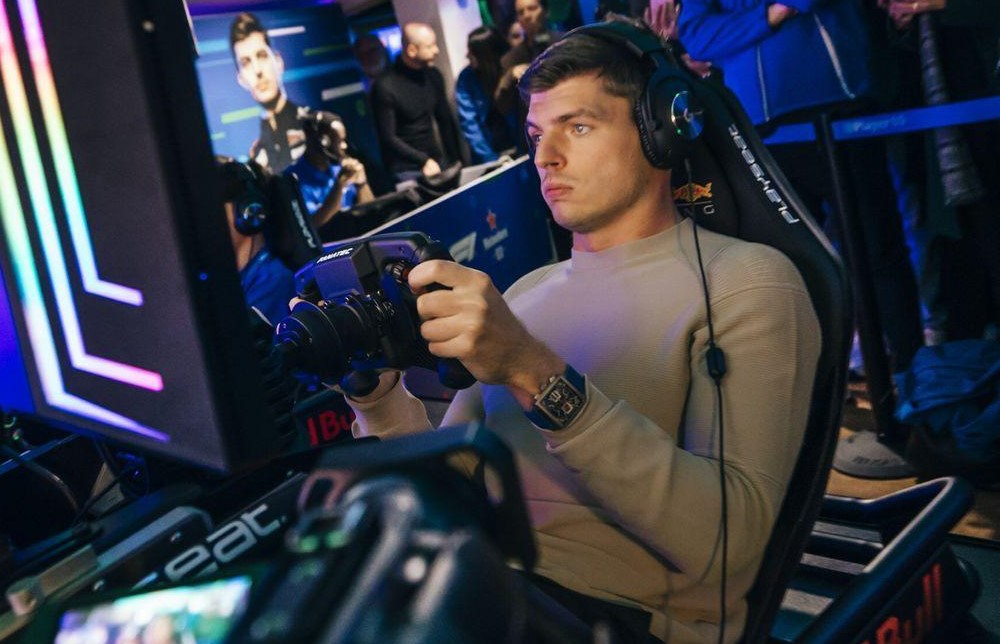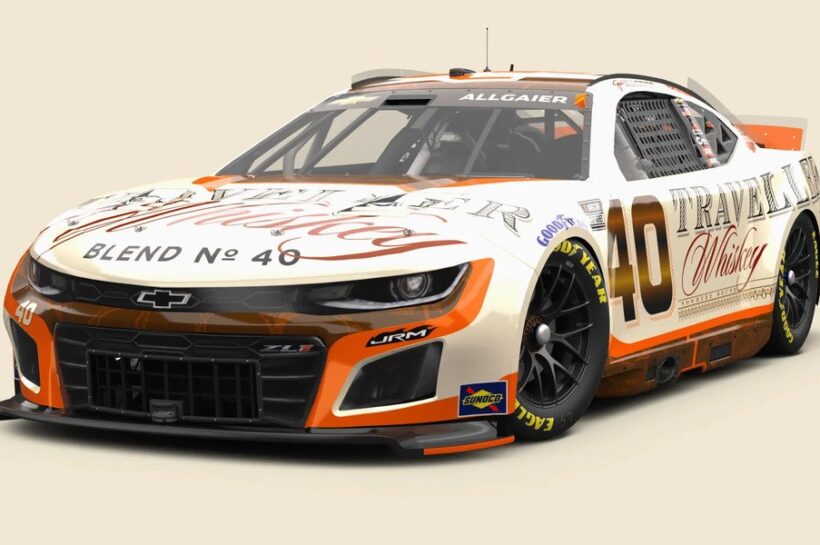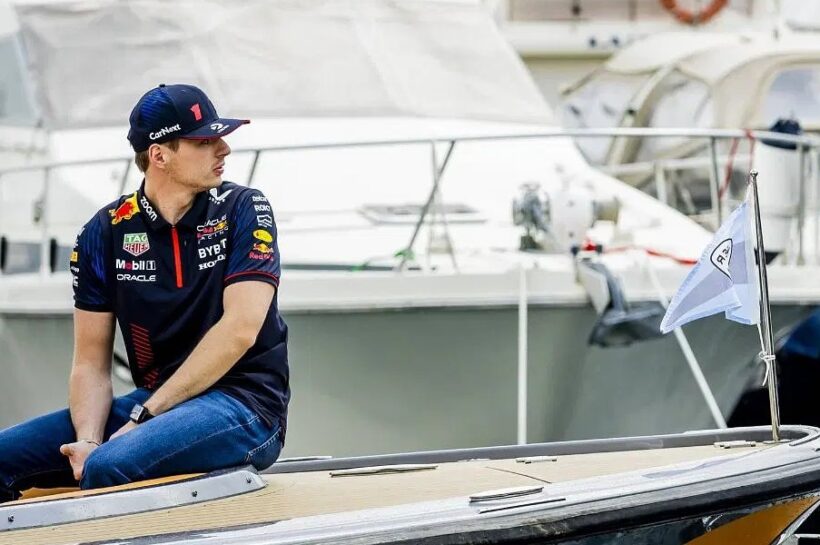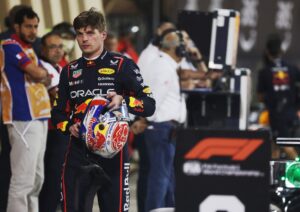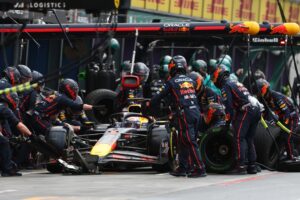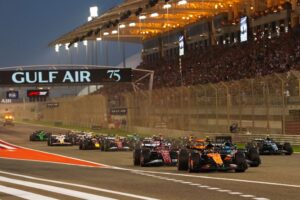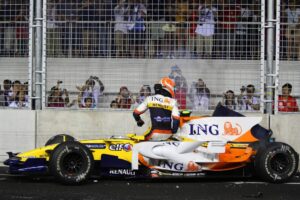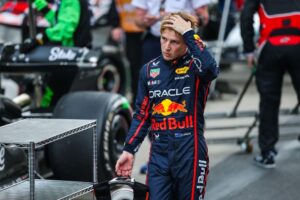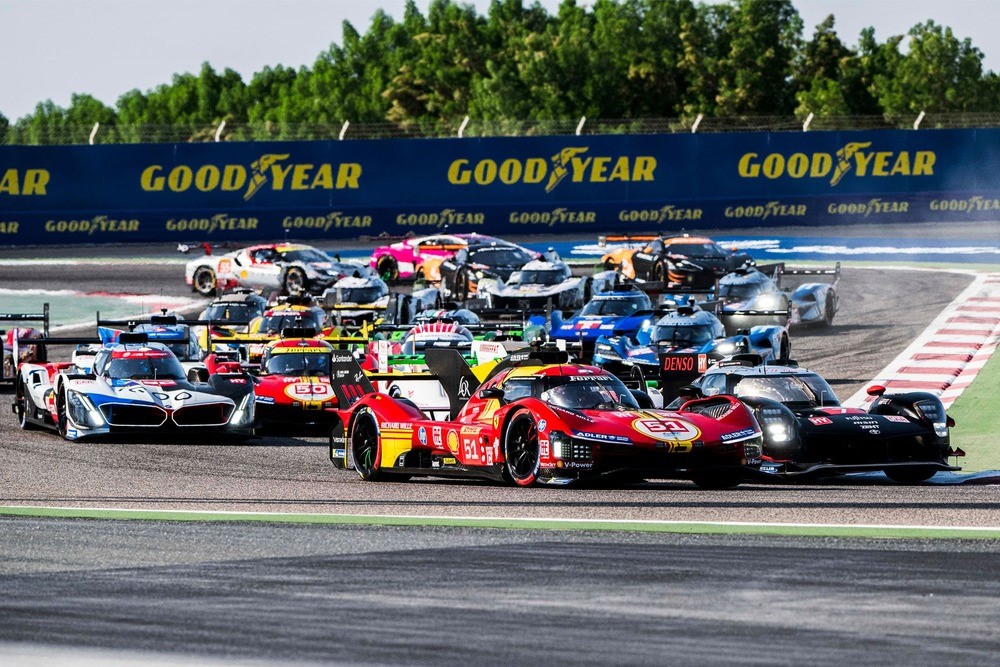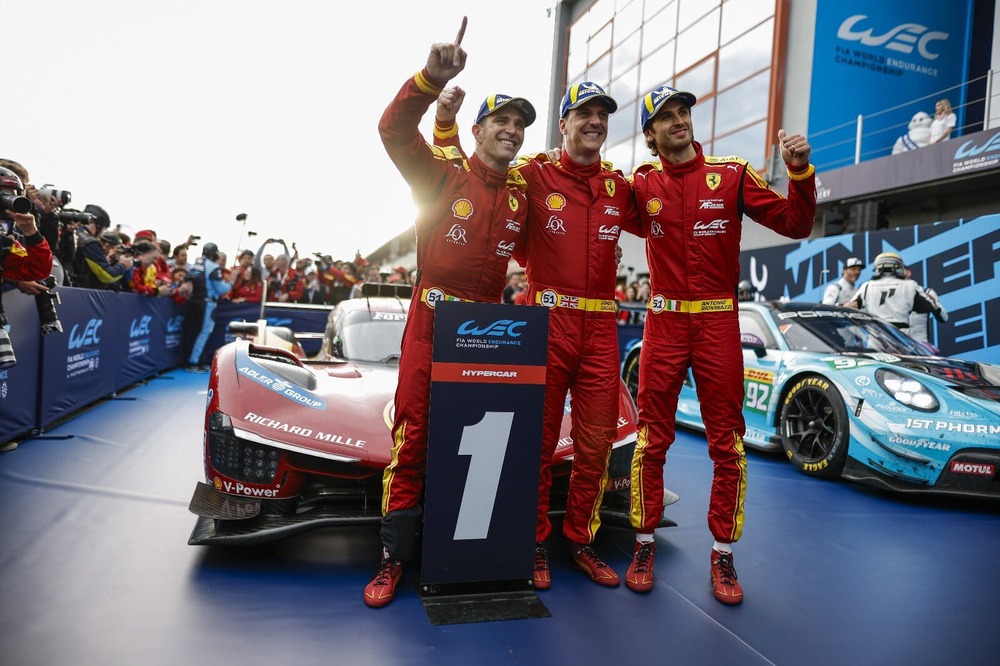The virtual 24 Hours of Daytona marked yet another challenging and tumultuous sim racing event for Max Verstappen who suffered a crash and penalties that denied Team Redline a win.
Competing for Team Redline in the GTP class, Verstappen’s race was marred by a huge crash that not only cost him the lead but also pushed his team down the standings, highlighting the unpredictable nature of sim racing even for a driver of his caliber.
The virtual 24 Hours of Daytona commenced with high expectations for Max Verstappen and his teammates, Chris Lulham and Diogo Pinto. After qualifying third in their #20 BMW M Hybrid V8, they quickly established themselves as frontrunners in the race.
However, as the race progressed into the wet conditions characteristic of Daytona’s unpredictable weather, the four-time F1 World Champion encountered difficulties that would ultimately derail their efforts.
With just over six hours remaining in the sim race, Verstappen was leading when he attempted to overtake a GTD car at the International Horseshoe.
Unfortunately, the Dutchman lost grip on the slick surface, leading to an aquaplane incident that resulted in contact with the slower car. The impact sent him sliding into the tire barrier, causing significant damage to his car.
Despite managing to reverse out and make it back to the pits for repairs, the damage was done, derailing Team Redline’s chances of winning the virtual 24 Hours of Daytona as they later found themselves falling several laps behind the new leaders.
This incident was particularly disappointing for Max Verstappen, who is known for his exceptional skill and composure on track. Following repairs, they found themselves in fourth place and eight laps down from the leaders—a stark contrast to their earlier dominance.
Verstappen’s misfortune was compounded by two additional penalties incurred during his stint. He received two 40-second penalties for unsafe entries into the pit lane after experiencing wheel lock-ups.
READ ALSO: Max Verstappen handed penalty in IMSA Esports Daytona sim racing event
These penalties further hindered Team Redline’s chances of reclaiming their position at the front of the pack and underscored how quickly fortunes can change in endurance racing.
As Verstappen navigated through these challenges, it became evident that sim racing, while sharing many similarities with real-world racing, presents its own unique set of difficulties.
In a Q&A session during the race, the 27-year old spoke about how sim racing replicates many aspects of real-life motorsport but lacks critical physical elements such as G-forces experienced in an actual car.
He noted that while drivers can work on setups and strategies similarly in both environments, the absence of physical feedback makes it a different challenge altogether.
“I think the biggest difference is, of course, the G-forces,“ Verstappen was quoted by F1Oversteer. “I mean, everything like accelerating, braking, cornering; that’s something that you don’t feel in sim racing. Especially at home, on a static rig, all these kind of motion rigs are slower.
“But of course, if you want to try and replicate a little bit of what you feel in real life, then you buy a motion rig. And then besides that, I think what is quite similar, I think in terms of how you work on the setup, how you work out strategies…
“And as you see now in this race as well, you know, it’s raining so you have to make the right call to be on the right tyres. It’s exactly the same as in real life. You’re working off a radar.
“So for me, I would say it’s like 90, 95% the same.”
Despite these setbacks, Max Verstappen remains optimistic about sim racing’s role in developing future talent within motorsport. He has been an advocate for integrating sim racing into driver training programs, emphasizing its potential to enhance skills and provide valuable experience.
His commitment to this cause is reflected in his active participation in various sim racing events beyond just this one at Daytona.
The virtual 24 Hours of Daytona however saw more controversies besides Verstappen’s struggles. As Team Redline battled to regain lost ground, discussions arose surrounding alleged cheating by other competitors.
Reports indicate that a Ferrari team had benefitted from an unusual situation where their driver managed to escape damage after crashing by forcibly exiting the game and rejoining without penalties. This incident sparked debates about fairness and integrity within virtual racing competitions.
As the virtual 24 Hours of Daytona drew closer to its conclusion, Team Redline’s prospects for a podium finish dwindled further. Despite their best efforts to recover from Verstappen’s crash and subsequent penalties, they ultimately finished fourth—disappointing results for a team accustomed to success.

